There are two common trees that may be found in your horse's pasture that are harmless for most of the year, but in the fall they can be deadly. Can you name them?
Red Maple
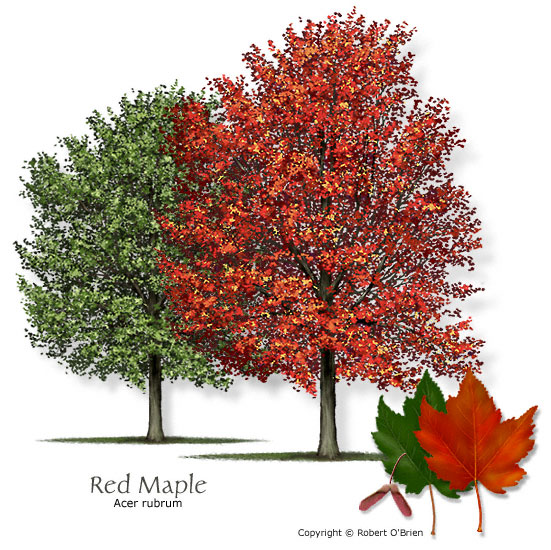
Red Maple trees (Acer rubrum) are colorful and vibrant this time of year, however, when the leaves drop they can be fatal to horses. Fresh, green maple leaves are not toxic, so red maple toxicity is seen in the late summer and fall when leaves are dead or wilted.
A 1000 pound horse can become ill after ingesting as little as 1.5 to 3 pounds of red maple leaves. The red blood cells in the body are destroyed. Red blood cells (RBCs) are very important for carrying oxygen throughout the body. When RBCs are broken down there is less oxygen available and they release a molecule called hemoglobin. Hemoglobin is toxic to the kidneys and can cause acute renal failure. Renal failure can lead to further internal complications.
The exact toxin that causes red maple toxicity is not known, so a diagnosis is made based on a history of eating red maple leaves and the horse's clinical signs. Signs typically develop within 1-2 days after eating wilted maple leaves. Depression, anorexia, and dark, red brown urine are the first signs you may notice. Eventually you may also see labored breathing and an increased pulse. The gums and whites of the eyes may also appear yellow.
Box Elder
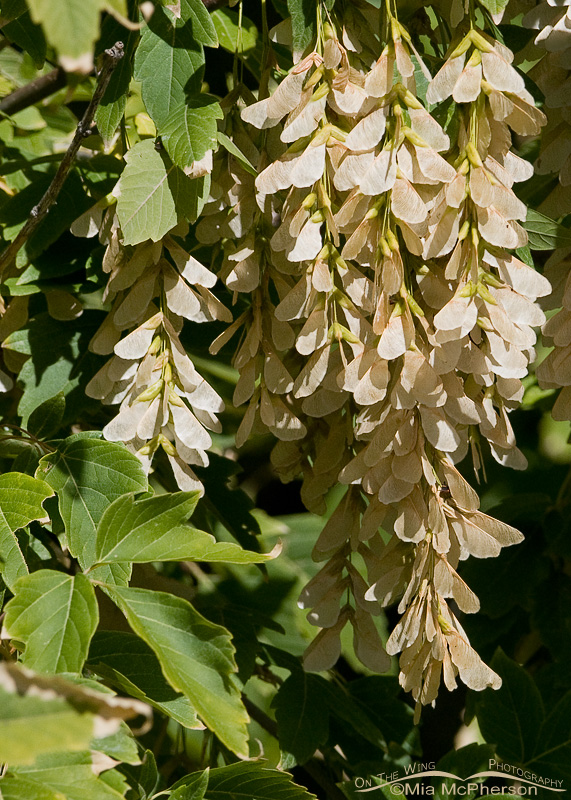 |
| Box Elder |
Seasonal pasture myopathy, or atypical myopathy, has been identified in North America and Europe for years, but the cause was unknown. Box elder trees have recently been implicated as the cause of seasonal pasture myopathy (SPM) in North America. Box elder (Acer negundo) trees are also part of the maple family. In this case it is ingestion of the box elder seeds rather than the leaves which results in toxicity. Box elder seeds carry a toxin called hypoglycin A which triggers severe muscle damage throughout the body. SPM is most commonly seen in the fall, but can occur in the spring and summer. It is different from other muscle disorders because the muscle damage is not associated with exercise. Multiple horses in a pasture can be affected, but horses that have been grazing on a pasture for a long time seem to be less at risk compared to young or new horses.
As with red maple toxicity, SPM affected horses may have difficulty breathing and have dark colored urine. However, they also show signs of muscle disorder with trembling and trouble moving. They may walk stiffly and want to lie down a lot. This reluctance to move may be mistaken as a sign of colic or founder. Horses may also appear to be choking.
TREATMENT
With both red maple toxicity and SPM the disease can progress rapidly and can be highly fatal. If you think your horse has been exposed, call a veterinarian right away. Horses that consume large amounts of red maple leaves at one time may die within 24 hours. Approximately two-thirds of horses with red maple toxicity die or are euthanized; 75- 90% of horses with SPM die within 24-72 hours even with treatment.
Horses respond better to treatment that is administered within a few hours of exposure. Activated charcoal can be given through a tube into the stomach to help absorb any toxins. Supportive care with IV fluids, pain medication, and even oxygen therapy may also be needed, along with very close monitoring. Due to the high mortality rate, prevention is most important.
IDENTIFICATION
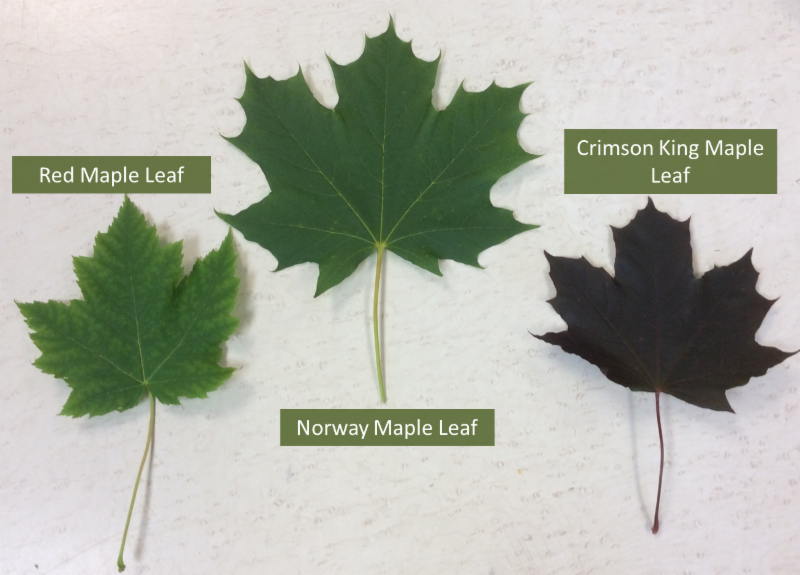
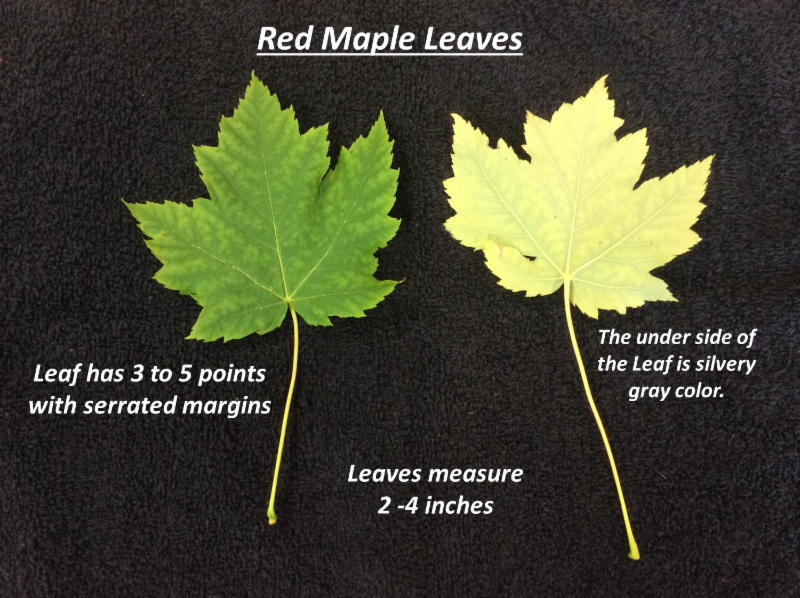 By recognizing these trees you can help prevent your horse from getting exposed. Many maple trees have leaves that turn a brilliant red in the fall, but not all of the trees with red leaves are red maple trees. Even more confusing, some red maple trees have leaves that turn yellow or orange. So how do you know if you have a true red maple tree? Red maple can be differentiated from the non-toxic species like sugar , Norway, or Crimson King Maples by the appearance of the leaves. The leaf has 3 to 5 points or lobes with serrated (jagged) margins and the underside of the leaf is a silvery gray color. Often the stem is red in color. Red maple leaves usually measure between 2-4 inches, which is slightly smaller in size than other maple leaves.
By recognizing these trees you can help prevent your horse from getting exposed. Many maple trees have leaves that turn a brilliant red in the fall, but not all of the trees with red leaves are red maple trees. Even more confusing, some red maple trees have leaves that turn yellow or orange. So how do you know if you have a true red maple tree? Red maple can be differentiated from the non-toxic species like sugar , Norway, or Crimson King Maples by the appearance of the leaves. The leaf has 3 to 5 points or lobes with serrated (jagged) margins and the underside of the leaf is a silvery gray color. Often the stem is red in color. Red maple leaves usually measure between 2-4 inches, which is slightly smaller in size than other maple leaves.
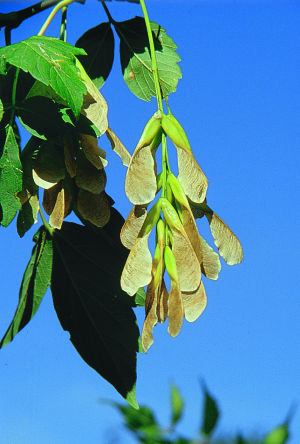 |
Box Elder
|
Box elder trees have compound leaves, appearing as a cluster of 3-7 leaflets that measure 2-4 inches. Leaves typically turn yellow in the fall. The samaras are the "helicopter" seeds. These seed pods are paired and also grow in clusters. The tree itself is small, fast growing and commonly has multiple trunks. It thrives near stream banks where there is ample water supply, but can be found growing in a variety of circumstances.
For more information on seasonal pasture myopathy and identification of box elder trees please refer to the University of Minnesota Equine Center Neuromuscular Diagnostic Laboratory website.
A local cooperative extension agent may be able to help identify what types of trees are growing on your property. Check with Cornell Cooperative Extension for contact information for your county.
PREVENTION
If you do find red maple or box elder trees in or around the pasture, do not panic, but do take steps to minimize your horse's risk. Horses usually do not actively seek out red maple leaves or box elder seeds, but may eat them if there is nothing else to eat or if they are bored. Making sure there is enough hay available for horses as their pastures get grazed down will help, but the safest option is eliminating or reducing their access to the trees. If trees can't be removed they should be fenced off and low hanging branches should be trimmed. Alternatively, horses can be moved to another pasture. Be aware of the weather. Heavy winds and rain can result in more shedding of leaves or seeds. Pastures may need to be monitored more closely after stormy weather has occurred. Fallen branches, leaves, and seeds should be removed quickly. The less your horse can ingest, the less likely they will be able to consume a toxic amount.